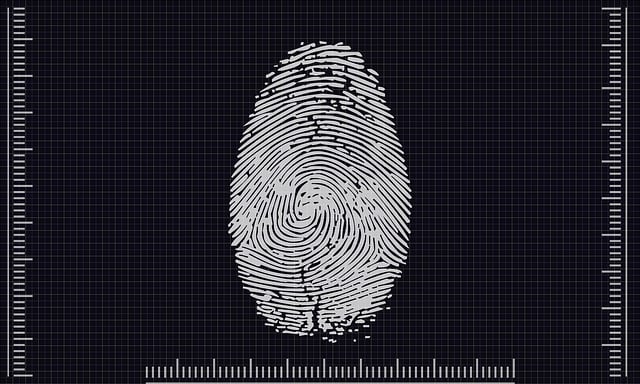Advanced imaging techniques like high-resolution nervous system CT scans and MRI with DTI are crucial for diagnosing and monitoring peripheral nerve damage caused by trauma or autoimmune disorders. These non-invasive methods provide detailed cross-sectional images, enabling healthcare professionals to identify abnormalities, assess nerve regeneration, and guide effective treatment strategies, improving patient outcomes.
Peripheral nerve damage affects millions globally, yet early detection remains challenging. This comprehensive guide explores imaging techniques revolutionizing diagnosis and monitoring of peripheral nerve conditions. From non-invasive methods like magnetic resonance imaging (MRI) and ultrasonography, to advanced modalities such as computed tomography (CT) scans with enhanced resolution, each offers unique insights into the nervous system’s intricate pathologies. Understanding these tools is crucial for healthcare professionals navigating this complex landscape.
Understanding Peripheral Nerve Damage: A Comprehensive Overview
Peripheral nerve damage, affecting the intricate network of nerves outside the central nervous system (including the brain and spinal cord), is a complex condition with varied causes. These include trauma, compression, entrapment, infections, autoimmune disorders, or exposure to toxins. Recognizing and understanding this damage is crucial for accurate diagnosis and effective treatment planning.
Imaging techniques play a pivotal role in assessing peripheral nerve health and identifying the extent of any damage. Methods like magnetic resonance imaging (MRI) and nervous system CT scans offer detailed visualizations of these small structures, enabling healthcare professionals to detect abnormalities, such as swelling, atrophy, or disruptions in nerve sheaths. These advanced imaging tools are instrumental in navigating the intricate landscape of peripheral nerve damage, guiding interventions, and ultimately improving patient outcomes.
Non-Invasive Imaging Techniques for Early Detection
Non-invasive imaging techniques play a pivotal role in early detection and diagnosis of peripheral nerve damage, offering valuable insights into the intricate structures of the nervous system. Advanced technologies like magnetic resonance imaging (MRI) and ultrasound have proven to be game-changers in this field. MRI provides detailed cross-sectional images of nerves, enabling professionals to identify lesions or abnormalities that may indicate damage. This non-ionizing radiation method is particularly useful for following nerve regeneration over time.
Furthermore, computed tomography (CT) scans offer a fast and accessible way to visualize the nervous system. While traditional CT scans have limited resolution when it comes to soft tissues like nerves, modern techniques, such as high-resolution CT imaging, can detect subtle changes in nerve structure. This is especially valuable for early detection of peripheral nerve injuries, providing crucial information for timely interventions and improved patient outcomes.
CT Scans: Unlocking Insights into Nervous System Pathologies
Computed Tomography (CT) scans have emerged as invaluable tools in the diagnosis and assessment of peripheral nerve damage, offering detailed insights into the complex anatomy of the nervous system. By utilizing X-rays and computer processing to generate cross-sectional images, CT scanners can reveal structural abnormalities, lesions, or compressions within the nerves that may be indicative of various pathologies. This non-invasive technique is particularly useful for identifying nerve entrapment, compression neuropathies, and even tumor growths affecting peripheral nerves.
The versatility of CT scans allows radiologists to analyze not only the extent of nerve damage but also its location and potential causes. In cases where magnetic resonance imaging (MRI) may be contraindicated due to metallic implants or other factors, CT provides a reliable alternative, ensuring prompt diagnosis and guiding subsequent treatment strategies for nervous system pathologies.
Advanced Modalities for Accurate Diagnosis and Monitoring
Advanced imaging techniques play a pivotal role in accurately diagnosing and monitoring peripheral nerve damage, offering detailed insights into the nervous system. One such powerful tool is a high-resolution nervous system CT scan, which provides cross-sectional images of the nerves, helping healthcare professionals identify any abnormalities or compression. This non-invasive method allows for repeated scans over time, enabling effective monitoring of nerve regeneration or deterioration.
Additionally, magnetic resonance imaging (MRI) offers unparalleled contrast resolution, distinguishing between various soft tissues, including peripheral nerves. Advanced MRI techniques like diffusion tensor imaging (DTI) can track nerve fiber tracts, aiding in the assessment of nerve integrity and connectivity. These cutting-edge modalities revolutionize the diagnosis and management of peripheral nerve damage, providing more precise and comprehensive information than traditional imaging methods.
Peripheral nerve damage, a complex condition affecting the nervous system, demands precise imaging techniques for effective diagnosis. This article has explored various non-invasive methods that offer early detection capabilities, such as advanced MRI and NIR imaging. However, CT scans emerge as a powerful tool for in-depth analysis of the nervous system, providing detailed insights into pathologies. As medical technology advances, combining these imaging modalities ensures accurate assessment and monitoring, ultimately enhancing patient care for peripheral nerve damage.
